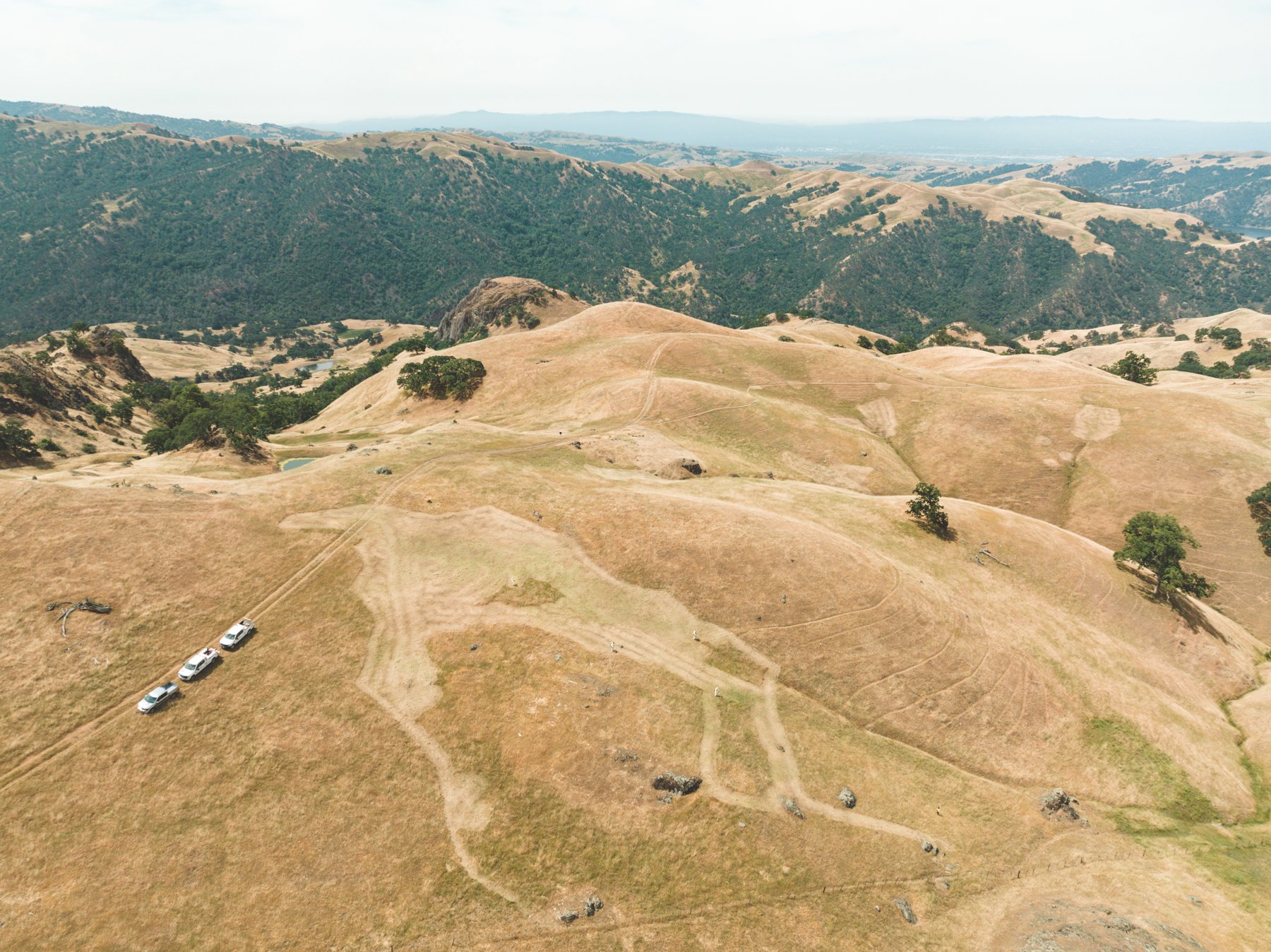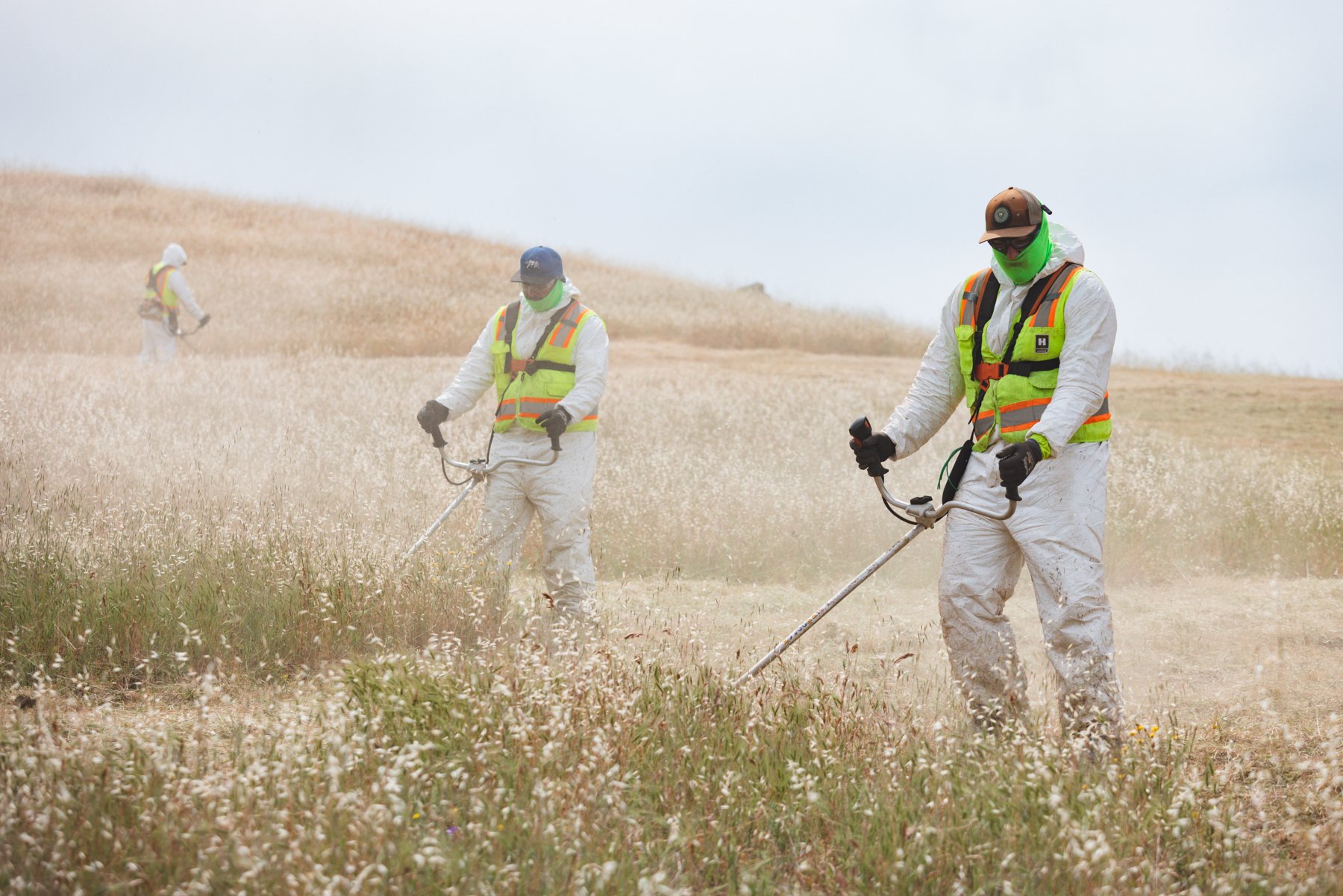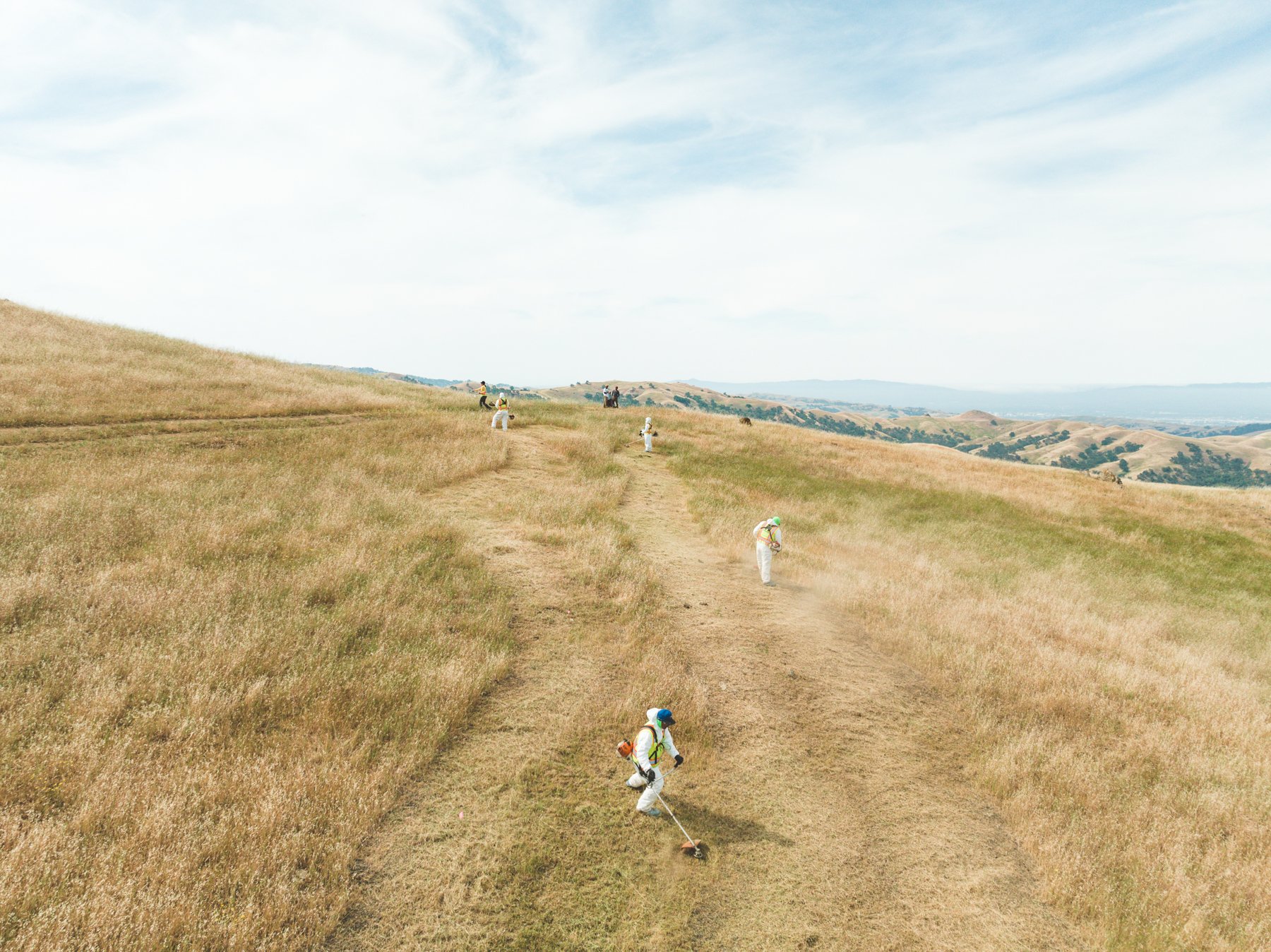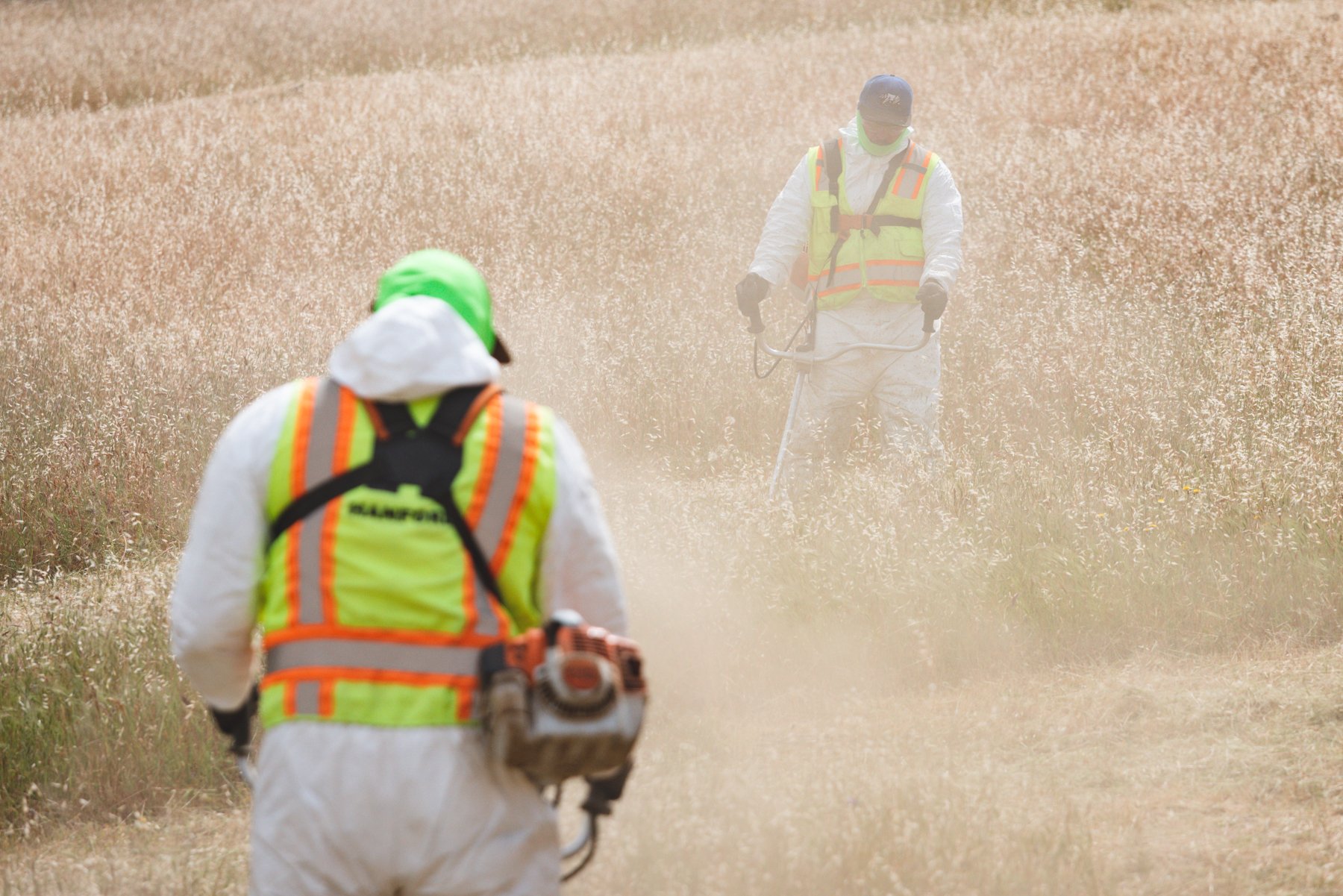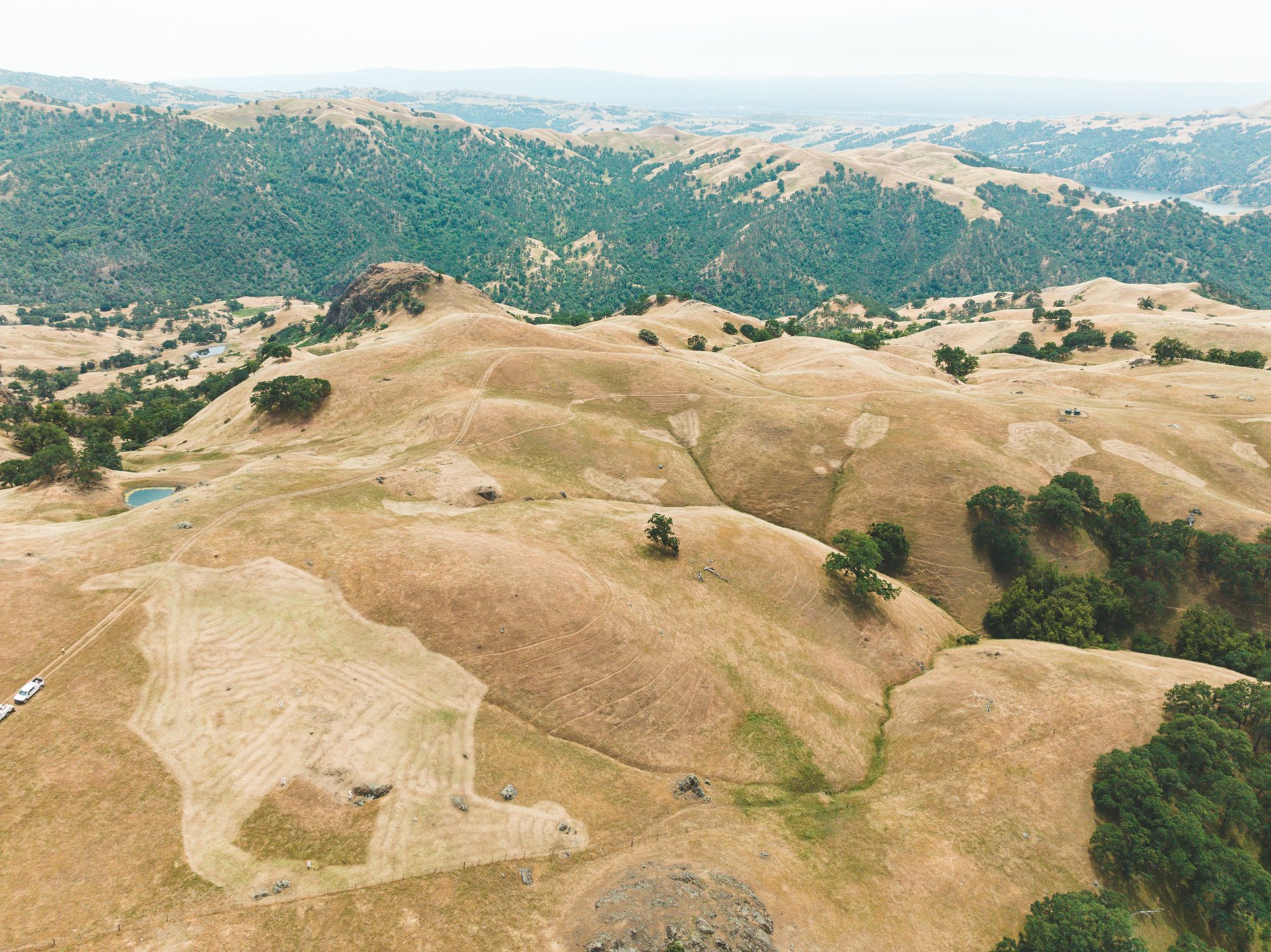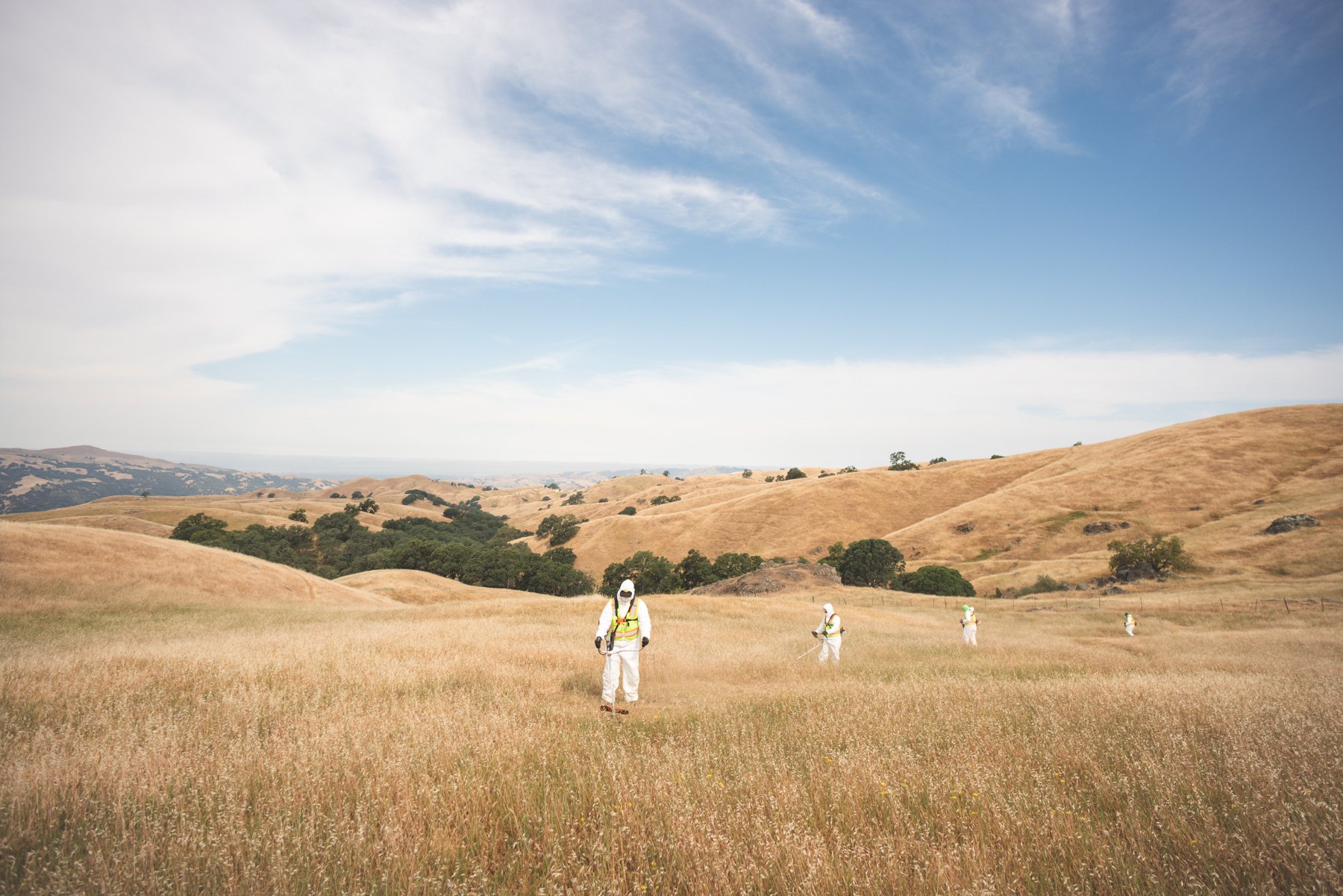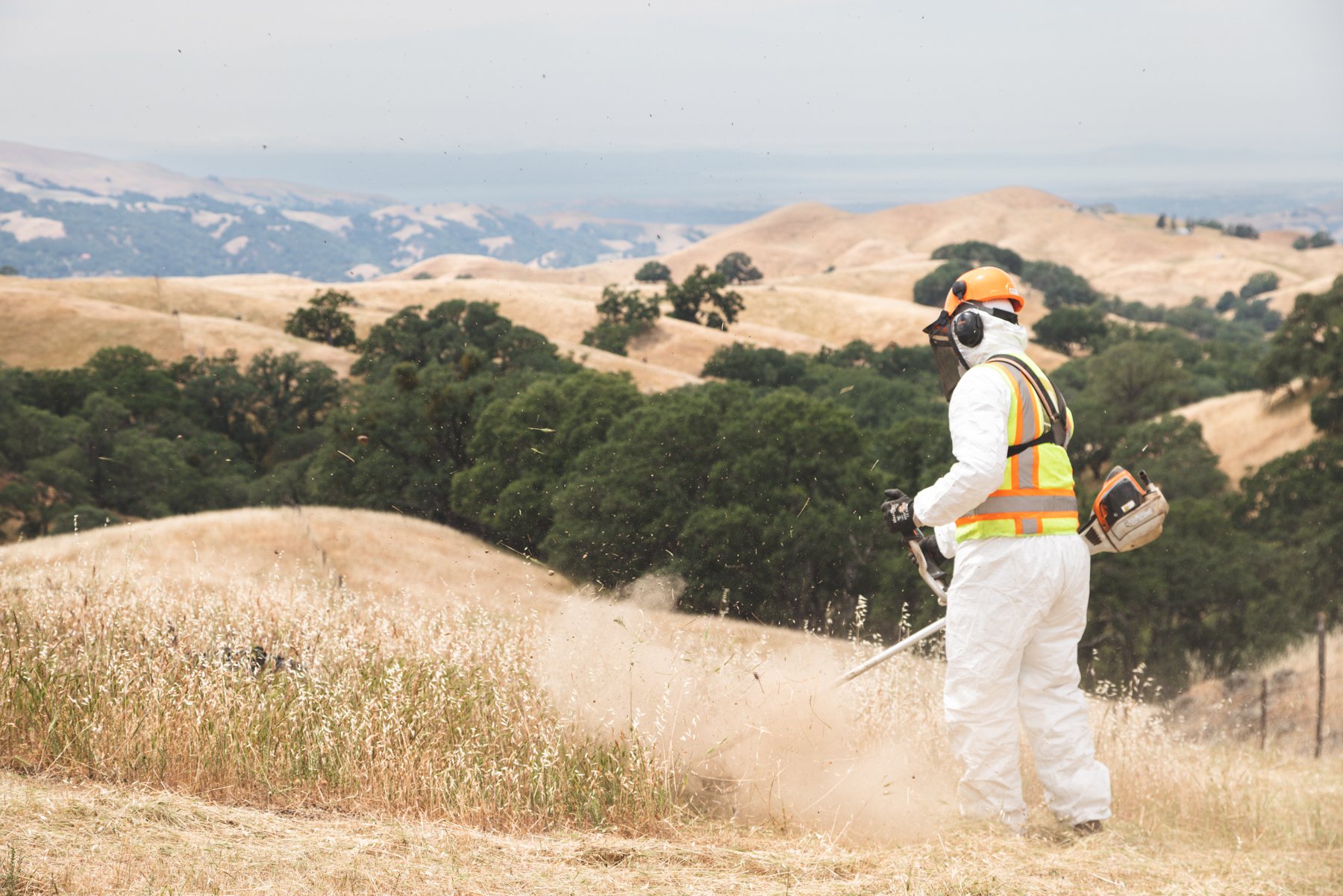Bioregional Habitat Restoration – Grasslands & Riparian Weed Management
The purpose of the Bioregional Habitat Restoration (“BHR”) program is to fulfill mitigation obligations by making ecosystem-level improvements to habitat for rare and endangered species. The San Francisco Public Utilities Commission (SFPUC) has developed compensation sites to preserve, enhance, restore, or establish approximately 2,050 acres of native habitat ranging from ponds to wetlands to oak savannah.
There are four primary projects that Hanford supports SFPUC on. San Antonio Creek is a 1.8-mile reach with a constructed creek crossing, improved creek channel area, and 80 acres of planting. Over 300 acres of grasslands, riparian corridors and stock ponds are actively managed as part of this project. Sheep Camp Creek is a 5,000 linear feet section of channel restored to support special-status species such as California tiger salamanders and California red-legged frogs. Goat Rock is a cattle infrastructure improvement project and associated enhancements include exclusion fencing to protect riparian areas. Goldfish Pond is a re-graded and expanded stock pond, and more than 5 acres of planted seasonal wetlands.
DIVISION: Land Management
Location: Sunol, CA
CLIENT: San Francisco Public Utilities Commission
Contract Period: 2017 – present
Project Goals
Maintain existing projects and associated managed wildland areas nearby.
Schedule, plan, execute and document work across hundreds of acres.
Year-round tasks mitigating several high-risk invasive plant species during different flowering periods based on phenology.
Hand-removing non-native plants before they flower or set seed.
Applying herbicide to control the spread of invasive plants.
Mowing large grassland areas to control invasive grass species.
Using other industry methods (tarps, flaming) to control invasive plants.
Conducting pilot projects (steam treatment of mulch) to reduce plant disease risk for existing native plants.
Building native plant nursery improvements, including shade structures, benches and irrigation.
Support SFPUC’s Non-Native Invasive Plant management program which is entirely separate from the BHR-related mitigation work.
As the primary contractor for SFPUC in NNIP, Hanford crews regularly control populations of invasive plants by manual, chemical and mechanical (mowing) means.
This program is funded separately from BHR, but it is managed jointly as the goal and tasks are largely aligned.

